A _______________________ is an overflow of an expanse of water that submerges land.
Flood
What are the two types of simple past there is?
1. Past of verb to be
2. Simple past (Regular and irregular verbs)

In which country was the stongest earthquake ever recorded in history?
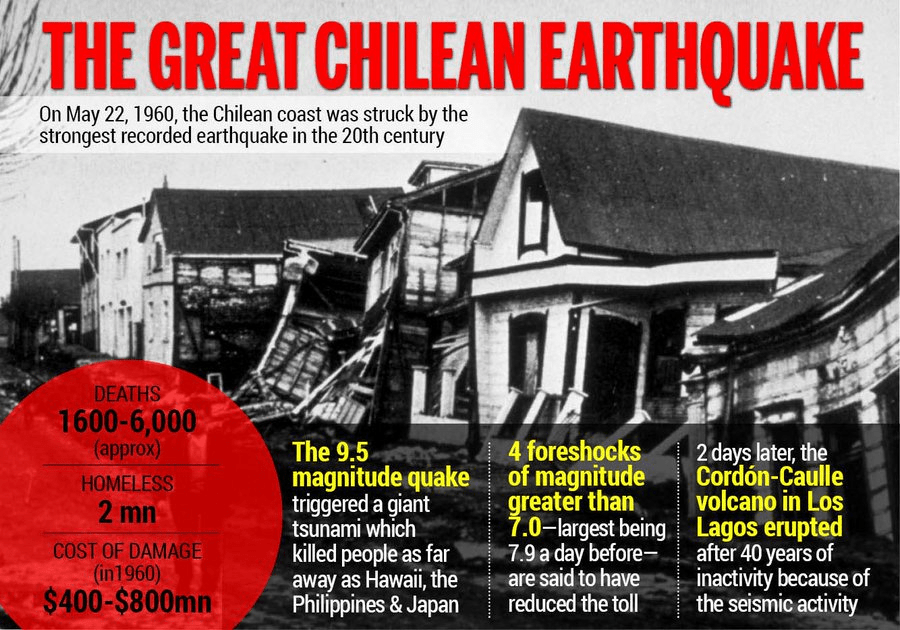
Valdivia, Chile
What is the past of the verb SLEEP?
SLEPT
1. Earthquakes
2. Volcanic Eruptions
3. Floodings
4. Hurricanes
5. Tornados
Do verbs in past mostly end in -ED?
_______________________ is the strength of an earthquake.
Magnitude
They __________ at the office when the earthquake happened.
How can we complete the sentence?
A. GO B. WENT C. WERE
Option C
They WERE at the office when the earthquake happened.

On 26 December 2004, at 07:58:53 am, a major earthquake with a magnitude of 9.1–9.3 Mw. The undersea megathrust earthquake, was caused by a rupture along the fault between the Burma Plate and the Indian Plate.
A massive tsunami with waves up to 30 m (100 ft) high, known in some countries as the Boxing Day Tsunami after the Boxing Day holiday, devastated communities along the surrounding coasts of the ocean, killing an estimated 227,898 people in 14 countries in one of the deadliest natural disasters in recorded history.
Mention 3 countries affected by the Tsunami:

India
Indonesia
Malaysia
Maldives
Myanmar
Somalia
Sri Lanka
Thailand
What is the past of the verb GO?
At 1:21:35 pm local time on January 8 with an Mwc magnitude of 6.1 and a maximum Mercalli intensity of VII (Very strong). The shock took place in northern Costa Rica, 30 kilometres (19 mi) north-northwest of San José and was felt throughout Costa Rica and in southern central Nicaragua.
The earthquake took at least 34 lives, including at least three children, left 64 people missing, and injured at least 91. Hundreds of people were trapped and two villages were cut off. In addition, a hotel, houses, roads, and vehicles were damaged, and several bridges were also destroyed.
The town was severely hit, and all of the buildings there were heavily damaged.
Which town was severly afected?
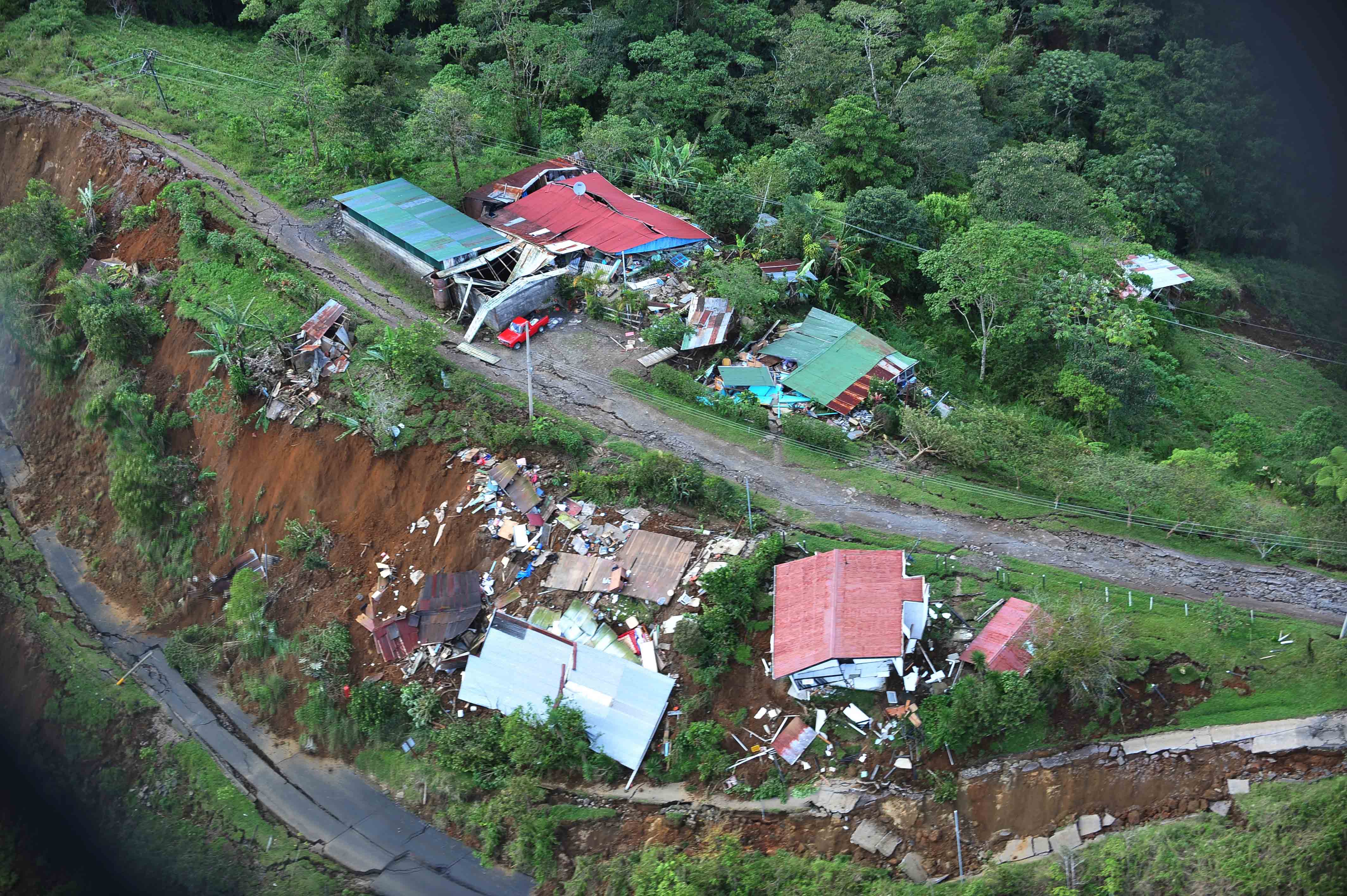
Cinchona in Alajuela.
When there is a one-syllable ends with vowel + Y the verb end in -IED.
Vowel + Y ONLY add ED
EXAMPLE:
PlAY - PlayED
How would you define the term "Cut Off"?
It is to stop the supply of something.
To stop.
Was _______ in the living room watching TV?
How can we complete the question?
A. ME B. JAMES C. THEY
OPTION B
Was JAMES in the living room watching TV?

This was a devastating and deadly Category 5 Atlantic hurricane that caused 1,836 fatalities and damages estimated between $97.4 billion to $145.5 billion in late August 2005, particularly in the city of New Orleans and its surrounding area.[1] At the time, it was the costliest tropical cyclone on record, later tied by Hurricane Harvey in 2017.
The largest loss of life in Hurricane Katrina was due to flooding caused by engineering flaws in the flood protection system, particularly the levee around the city of New Orleans. Eventually, 80% of the city, as well as large areas in neighboring parishes, were flooded for weeks. The flooding destroyed most of New Orleans's transportation and communication facilities, leaving tens of thousands of people who did not evacuate the city prior to landfall with little access to food, shelter, and other basic necessities.
What was the name given to this hurricane?
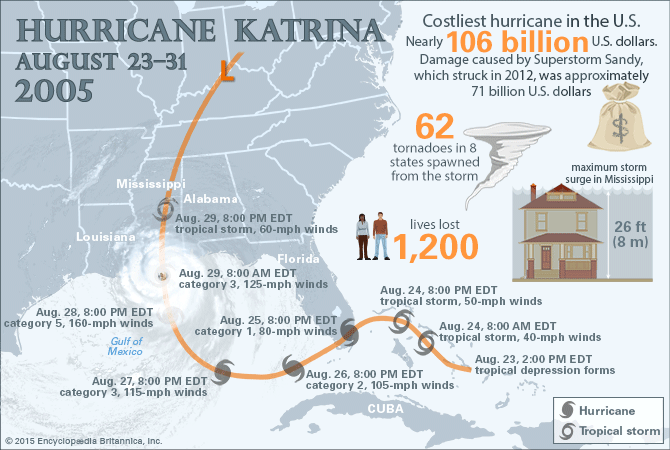
Katrina Hurricane
What are two characteristics of irregular verbs?
1. They can change their spelling completely.
2. They can stay the same as their simple present form.
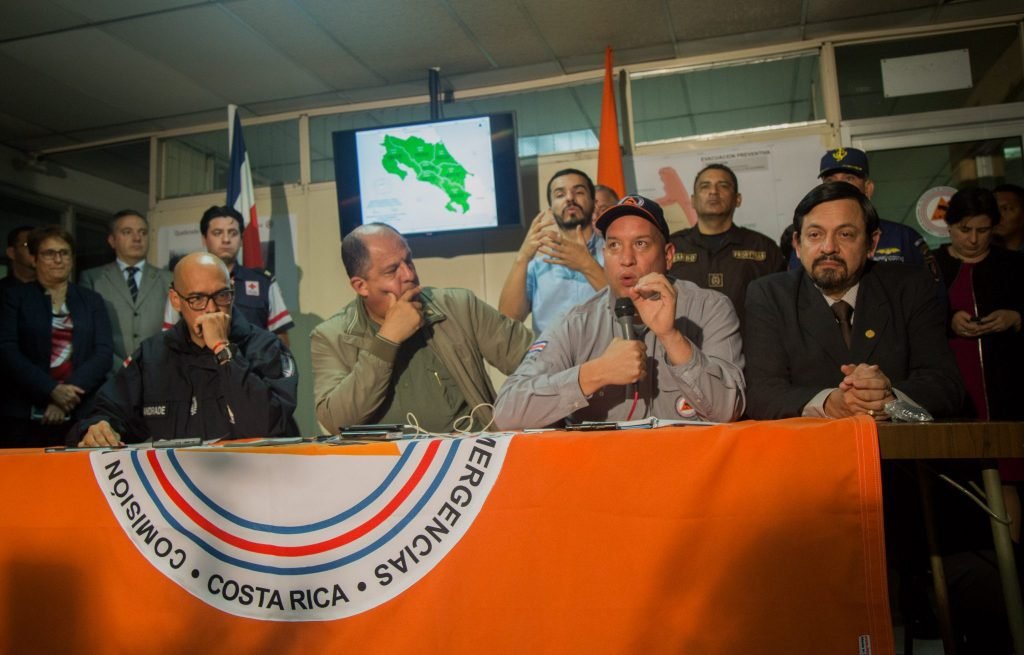

The authorities in Costa Rica declared a state of emergency on November 23rd, 2016. A red alert was in effect for several cantones in the Atlantic coast and northern regions and a yellow alert for the rest of the country. The President announced mandatory evacuations. Heavy rains associated with the hurricane affected 214 communities, with 21 communities cut-off; 18 shelters were operational and hosting 1,335 people. Some 4,000 were evacuated and 1,183 houses were damaged as well as roads, bridges and public and private infrastructure.
On 29 November, a red alert was issued for the cantons of Upala, Bagaces, Golfito and Corredores - the most affected by the hurricane and it was estimated that 10,000 people were need of humanitarian assistance.
What situation caused those alerts in Costa Rica?
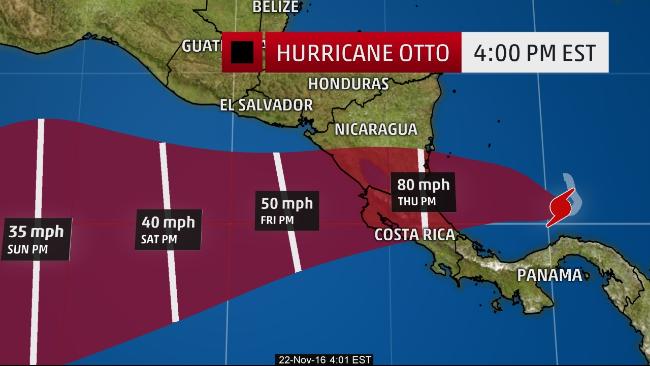
Otto Hurricane
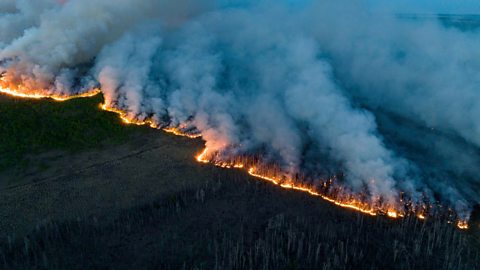
Wildfires are produced because of high temperatures and they have nothing to do with humans.
False

Wildfire can occur naturally, but they can also be caused by humans.
Human-related events that can ignite fires range from open burning such as campfires, equipment failure, and the malfunction of engines to debris burning, negligent discarding of cigarettes on dry grounds as well as other intentional acts of arson.
_______________________ are small quakes that often follow a much bigger event.
Aftershocks
Mention 3 ways to make a negation in simple past
1. Was not/Wasn't
2. Were not/Weren't
3. Did not/Didn't
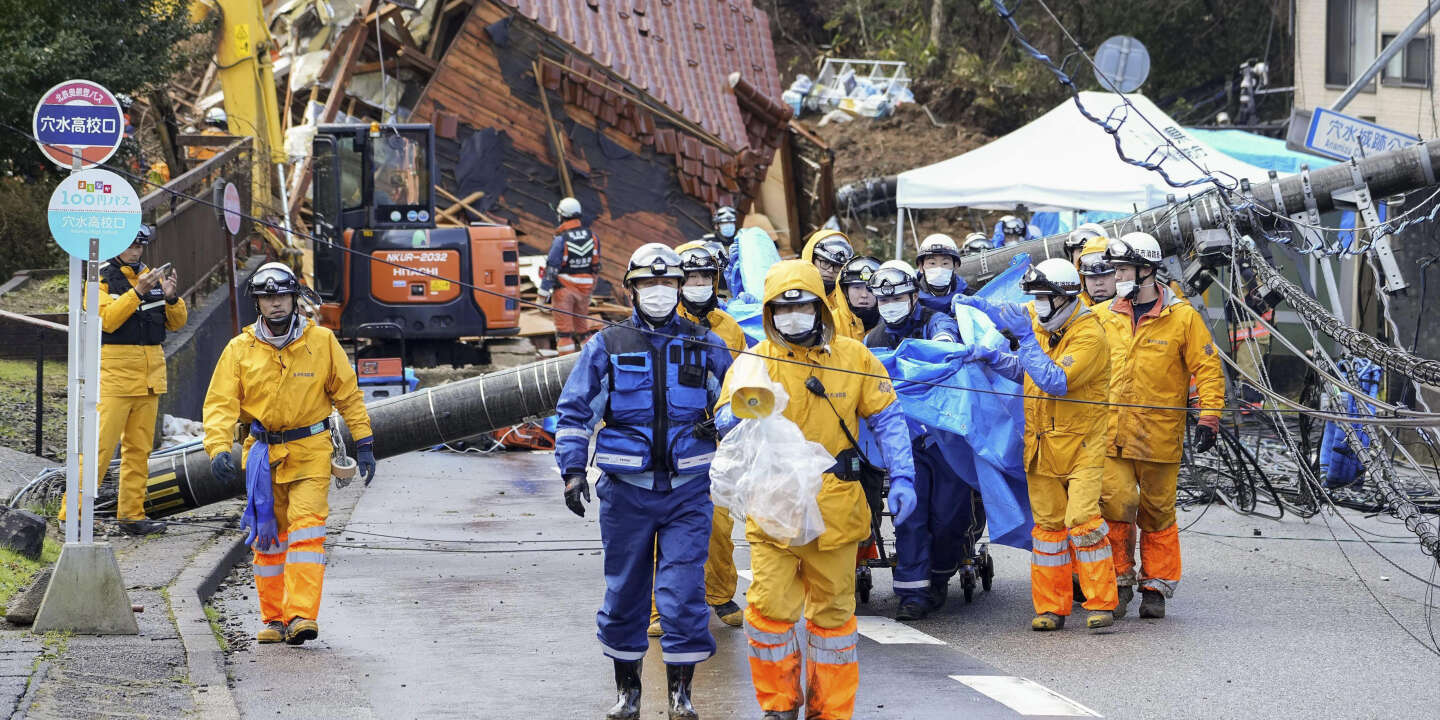
On 11 March 2011, at 14:46 JST (05:46 UTC), a Mw 9.0–9.1 undersea megathrust earthquake occurred in the Pacific Ocean, 72 km (45 mi) east of the Oshika Peninsula of the Tōhoku region. It lasted approximately six minutes, causing a tsunami. It is sometimes known in Japan as the "Great East Japan Earthquake". It was the most powerful earthquake ever recorded in Japan, and the fourth most powerful earthquake recorded in the world since modern seismography began in 1900.
The earthquake triggered powerful tsunami waves that may have reached heights of up to 40.5 meters (133 ft) in Miyako in Tōhoku's Iwate Prefecture.
Residents of Sendai had only eight to ten minutes of warning, and more than a hundred evacuation sites were washed away. The snowfall which accompanied the tsunami and the freezing temperature hindered rescue works greatly; for instance, Ishinomaki, the city with most deaths, was 0 °C (32 °F) as the tsunami hit. The official figures released in 2021 reported 19,759 deaths, 6,242 injured, and 2,553 people missing, and a report from 2015 indicated 228,863 people were still living away from their home in either temporary housing or due to permanent relocation.
Apart from the tsunami and all deaths it caused, what other disaster did the earthquake cause?

The tsunami caused the Fukushima Daiichi nuclear disaster, primarily the meltdowns of three of its reactors, the discharge of radioactive water in Fukushima and the associated evacuation zones affecting hundreds of thousands of residents.
In which case does the verb ending in past changes to "IED"?
Mention two examples:
When the verb end in CONSONANT + Y
Examples:
CarRY - CarrIED
StuDY - StudIED
TRY - TrIED
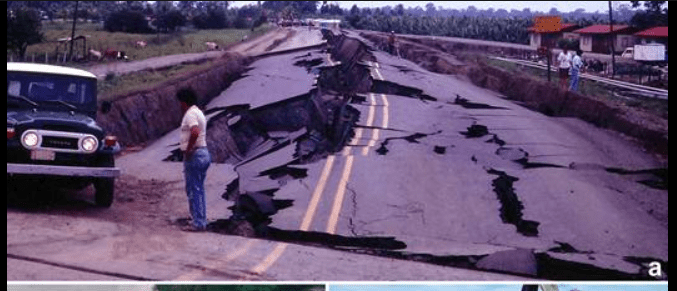
Known as the strongest earthquake ever recorded in Costa Rica's history as well as the deadliest. It happened at 3:57 pm local time on April 22nd, 1991, and its magnitude was of 7.7 Mw.
The earthquake claimed 48 lives in Costa Rica and 79 in Bocas del Toro, Panama. Roads and bridges were all destroyed, and the epicentral region was only accessible by helicopter.
What is this event known as?
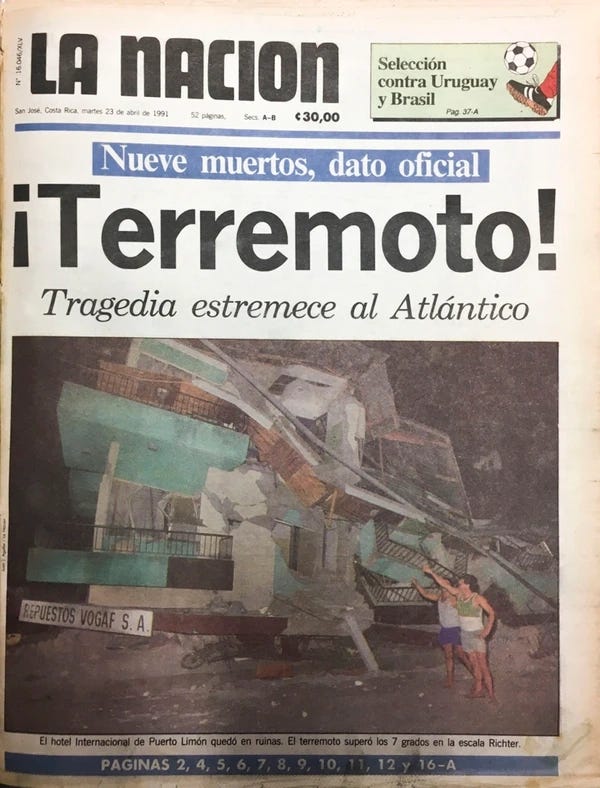
Limon Earthquake

The biggest volcano on earth is taller than Mount Everest.
TRUE
Mauna Kea in Hawaii is 10,200 metres tall – making it taller than Mount Everest. However, most of it is underwater so it seems much smaller.
_______________________ are essential things needed to survive.
Mention 3 examples
Vital Supplies
Examples: Water, food, clothing, medicines
Mention three examples of sentences as requested:
1. You/Affirmative
2. Mary/Negative
3. They/Information Question
1. You were.../ You (Verb in past)
2. Mary was not.../Mary did not...
3. What/Where/When/How...
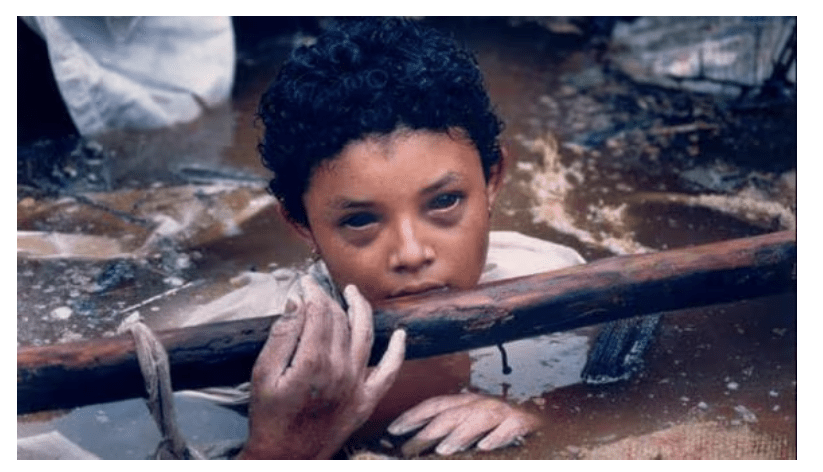
This picture was taken on November, 1985 in Armero, Colombia. What was the natural disaster that happened when that picture was taken?

A Volcanic Eruption.
As pyroclastic flows erupted from the Nevado del Ruiz volcano's crater, they melted the mountain's glaciers, sending four enormous lahars (volcanically induced mudflows, landslides, and debris flows) down its slopes at 50 km/h (30 mph). The lahars picked up speed in gullies and engulfed the town of Armero, killing more than 20,000 of its almost 29,000 inhabitants.
Mention/spell the past form of the following verbs:
1. Have
2. Hurt
3. Put
4. Stop
5. Offer
1. HAD
2. HURT
3. PUT
4. STOPPED
5. OFFERED
Its most famous eruption began in mid-March 1963, a few days before US President John F. Kennedy started a state visit to Costa Rica. It showered the capital San José and much of the central highlands of Costa Rica with ash. Eruptions continued for two years.
The prolonged ashfall severely damaged dairy, vegetable, and coffee farms, and for a while made daily life in the affected cities extremely difficult. Accelerated runoff of rainwater from the ash-covered slopes of the volcano caused destructive floods, mudflows, and landslides that caused at least 40 deaths, and destroyed 400 houses and some factories.
What volcano caused such a disaster in Costa Rica?

Irazu Volcano in Cartago.

Two hurricanes can come together to form a stronger storm.
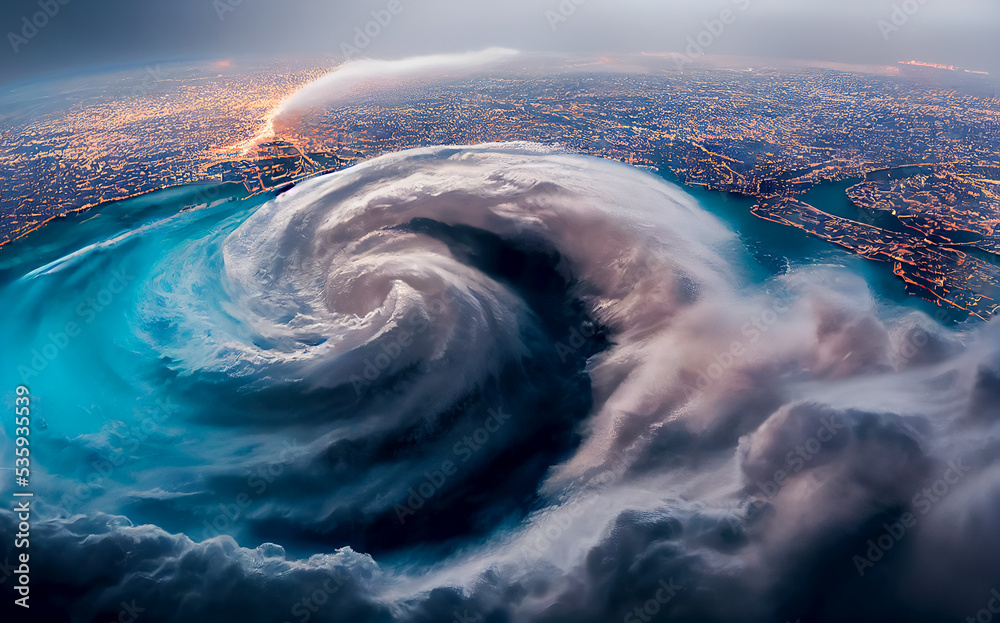
False
Hurricanes do not come together to form a stronger storm. In fact, when two hurricanes come close to each other, they tend to interact in a way that weakens both storms. This phenomenon is known as the Fujiwhara effect. The interaction between the two storms can cause them to rotate around a common center, but it does not result in the formation of a stronger storm. Therefore, the statement is false.

